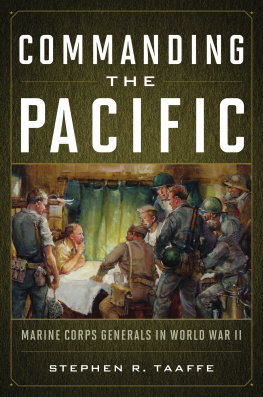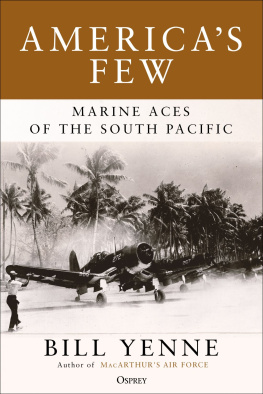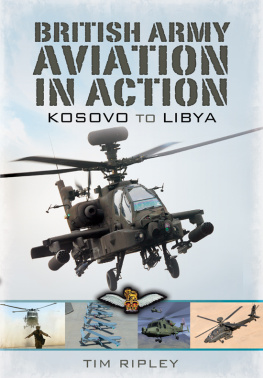Due to variations in the technical specifications of different electronic reading devices, some elements of this ebook may not appear as they do in the print edition. Readers are encouraged to experiment with user settings for optimum results.
Copyright 2019 by The University Press of Kentucky
Scholarly publisher for the Commonwealth,
serving Bellarmine University, Berea College, Centre
College of Kentucky, Eastern Kentucky University,
The Filson Historical Society, Georgetown College,
Kentucky Historical Society, Kentucky State University,
Morehead State University, Murray State University,
Northern Kentucky University, Transylvania University,
University of Kentucky, University of Louisville,
and Western Kentucky University.
All rights reserved.
Editorial and Sales Offices: The University Press of Kentucky
663 South Limestone Street, Lexington, Kentucky 405084008
www.kentuckypress.com
Unless otherwise noted, photographs are courtesy of the US Marine Corps.
Maps by George Stoll.
Library of Congress Cataloging-in-Publication Data
Names: Johnson, Wray R., author.
Title: Biplanes at War : US Marine Corps Aviation in the Small Wars Era, 19151934 / Wray R. Johnson.
Description: Lexington, Kentucky : University Press of Kentucky, 2019. | Series: Aviation & Air Power | Includes bibliographical references and index.
Identifiers: LCCN 2018056725| ISBN 9780813177045 (hardcover : alk. paper) | ISBN 9780813177069 (pdf) | ISBN 9780813177052 (epub)
Subjects: LCSH: United States. Marine CorpsAviationHistory20th century. | HaitiHistoryAmerican occupation, 19151934. | NicaraguaHistoryRevolution, 19261929.
Classification: LCC VG93 .J64 2019 | DDC 972.94/05dc23
LC record available at https://lccn.loc.gov/2018056725
This book is printed on acid-free paper meeting
the requirements of the American National Standard
for Permanence in Paper for Printed Library Materials.
Manufactured in the United States of America
| Member of the Association
of University Presses |
Preface
How vain it is to sit down to write when you have not stood up to live.
Henry David Thoreau
I sat down to write this story because of the marines who stood up to live, and die, in lands far away from their homes, for reasons they did not truly fathom, in flimsy flying machines that killed more of them than the enemy ever did. It is for those marines and for the marines I have taught and teach today that I wrote this book. Semper fidelis.
This book borrows its approach from philosopher and political theorist Michael Oakeshott, an Englishman who wrote about the philosophy of history (among other things). Oakeshott believed that experience forms a single whole that is inseparable from reality. In that regard, he likened the task of the historian in explaining experience to that of building a wall without mortar. Even if one lays the bricks or stones as closely together as possible, gaps remain. And when the builder is careless in the placement of the materials, the gaps are even wider. If the gaps are too great, our understanding of the whole is inadequate, and the wall we have built may (and very probably will) collapse. The history of Marine Corps aviation during World War I and the period between the world wars has many gaps. Fortunately, the overall picture is adequate. But here, I aim to provide a fuller (albeit still incomplete) understanding of the marines experience.
This book also borrows from Hegel, whose philosophy of history is neatly summarized in the German phrase Weltgeschichte ist das Weltgericht, or World history is a tribunal that judges the world. In other words, history judges men, their actions, their ideas, and, ultimately, how we regard them. Many historians have condemned American intervention in Latin America between the world wars, as well as the actions of the marines who executed those interventions. Other historians have sought to explain the rationale for intervention ex ante rather than ex post and have given the marines their due for attempting to achieve positive results. Still other historians eschew interpretation in the sense of judging history. These positivists and neo-positivists oppose judgment as unscientific and therefore pretend to be neutral and objective, which I believe is impossible. To be objective is a worthy goal, and to offer a fair interpretation is equally worthy, but to claim neutrality is a lie.
I am not neutral in my approach to the history of Marine Corps aviation in the small wars era, here defined as the period beginning with the occupation of Haiti in 1915 and ending with the marines withdrawal from Nicaragua in 1933 and Haiti in 1934. I am not neutral because I am a retired US Air Force officer who served in a small wars capacity and was one of three men in the early 1990s who built a special operations squadron specifically designed to execute a mission not unlike that of Marine Corps aviators in the Caribbean, Central America, and China. I am not neutral because my father was a marine and because I have worked for the Marine Corps as a professor in the School of Advanced Warfighting, a part of Marine Corps University, since 2007. Speaking as an airman, I believe Marine Corps aviators have not been given adequate recognition for what they accomplished between the world wars, especially when it comes to the subject of aviation in small wars.
With the above in mind, I do not pretend that this book is the full and definitive reconstruction of that experienceor, to borrow Oakeshotts analogy, of that particular wall. To achieve a reasonably definitive understanding of the marines experience, one must commit oneself to the full depth and breadth of the literature on the subject, from politics to technology. As marine Lieutenant General Paul Van Riper likes to say: Cast your net widely. To help readers fill in many of the gaps created by casting that net, I have included extensive notes. For those readers who do not normally peruse the notes (which is common), I highly encourage you to do so in this case.










